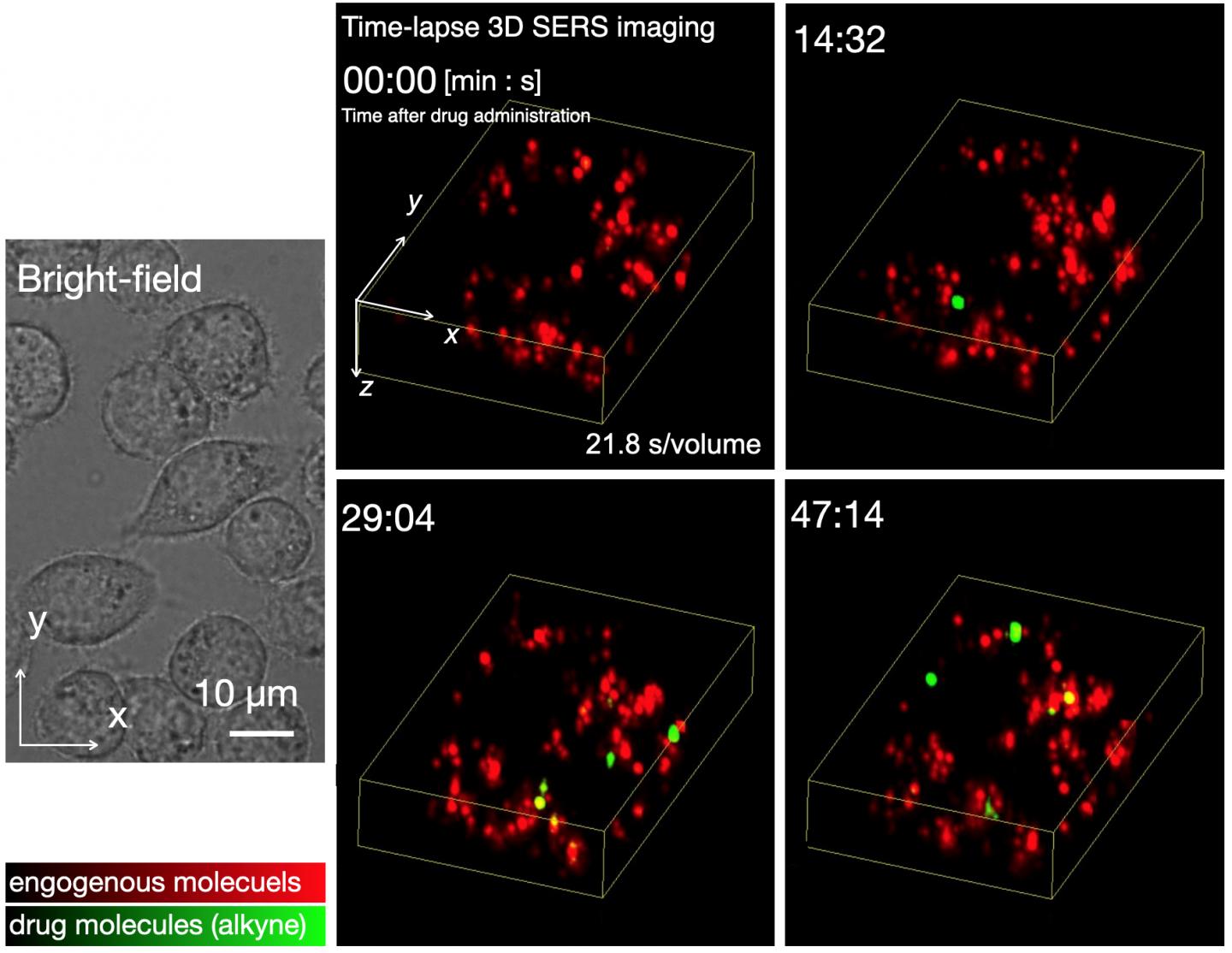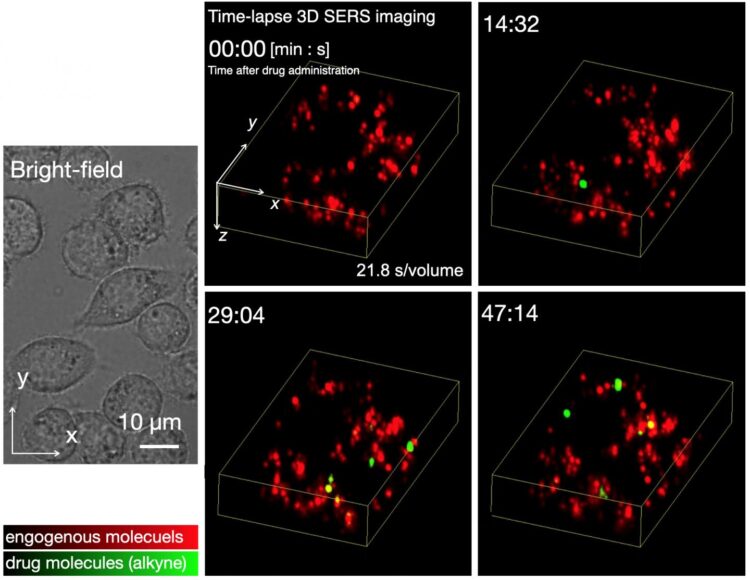Osaka University researchers report a combination of alkyne tags and surface-enhanced Raman scattering (SERS) microscopy for following the dynamics of small-molecule drugs in cells

Credit: Osaka University
Osaka, Japan – Successful drug development has a significant impact on people’s quality of life worldwide. Being able to track how molecules get into target cells, and observing what they do when they are inside, is key to identifying the best candidates. Analysis techniques therefore form an important part of the drug discovery process. Researchers from Osaka University, in collaboration with RIKEN, have reported a Raman microscopy-based approach for visualizing small-molecule drugs that uses gold nanoparticles. The team’s findings are published in ACS Nano.
Small drug molecules are often traced by attaching them to fluorescent probes that are visible when they are irradiated with light. Microscopy can then be used to see these molecules inside cells in real time. However, fluorescent molecules can be bulky, which can affect the way the small molecules behave. Additionally, some fluorescent molecules lose their fluorescence if they are exposed to too much light, making it difficult to see them over the course of long studies.
One alternative to fluorescent labels is a much smaller tag known as an alkyne, which composed of carbon-carbon triple bonds. The particular arrangement of atoms in alkynes is not found naturally in cells; therefore, they provide a highly specific marker. Furthermore, their small size means that alkynes have minimal effect on the small-molecule behavior. Instead of emitting fluorescence under laser light, alkynes produce what is known as a Raman signal, which can be clearly identified among the cell material signals.
However, looking for the Raman signal of alkyne groups is tricky when there aren’t many of them around because of the low efficiency of Raman scattering. The researchers have therefore combined alkyne-tagging with the use of gold nanoparticles. Surface-enhanced Raman scattering (SERS) microscopy can stimulate gold nanoparticles to produce enhanced electric fields that boost the Raman signal of the alkyne groups, making them easier to detect.
“Our approach is a combination of techniques that have been used for tracking small molecules in live cells,” study lead author Kota Koike explains. “Gold nanoparticles are particularly useful messengers for reporting the presence of alkyne groups because they enhance the alkyne signal, as well as providing a surface that the alkynes like to interact with. The two components therefore come together naturally to generate the enhanced signal.”
Gold nanoparticles are readily taken up by numerous different types of cells, making the technique broadly applicable. The nanoparticles enter the lysosome compartments inside the cell and then enhance the signal of the alkyne-tagged molecules that subsequently arrive in the lysosomes and interact with them.
“Our SERS technique has the potential to be used with a variety of different cell types as well as a virtually limitless number of drug candidates,” study corresponding author Katsumasa Fujita explains. “This is particularly exciting for drug discovery where any means of better understanding drug dynamics in real time is extremely valuable for development.”
###
The article, “Quantitative Drug Dynamics Visualized by Alkyne-Tagged Plasmonic-Enhanced Raman Microscopy”, was published in ACS Nano at DOI: https:/
About Osaka University
Osaka University was founded in 1931 as one of the seven imperial universities of Japan and is now one of Japan’s leading comprehensive universities with a broad disciplinary spectrum. This strength is coupled with a singular drive for innovation that extends throughout the scientific process, from fundamental research to the creation of applied technology with positive economic impacts. Its commitment to innovation has been recognized in Japan and around the world, being named Japan’s most innovative university in 2015 (Reuters 2015 Top 100) and one of the most innovative institutions in the world in 2017 (Innovative Universities and the Nature Index Innovation 2017). Now, Osaka University is leveraging its role as a Designated National University Corporation selected by the Ministry of Education, Culture, Sports, Science and Technology to contribute to innovation for human welfare, sustainable development of society, and social transformation.
Website: https:/
Media Contact
Saori Obayashi
[email protected]
Original Source
https:/
Related Journal Article
http://dx.





